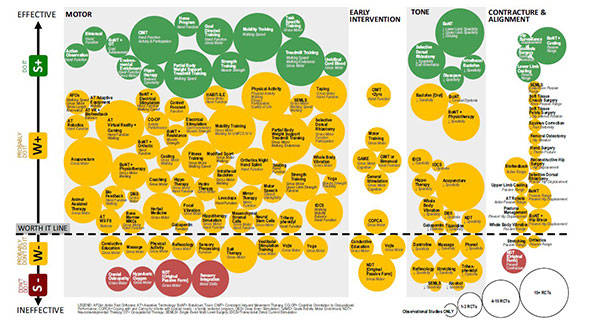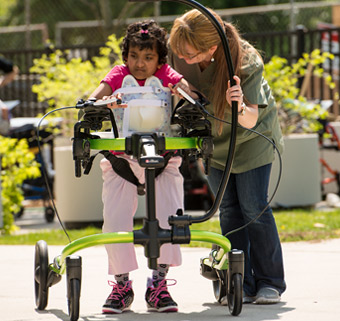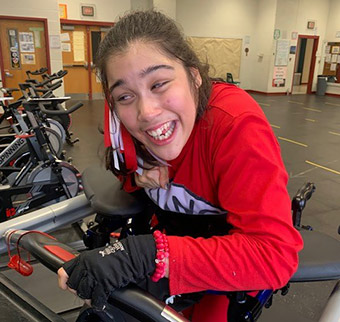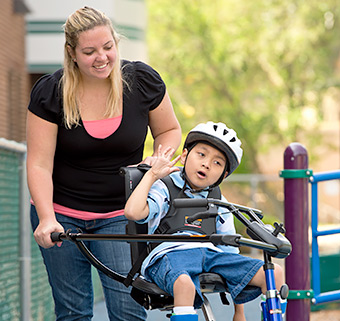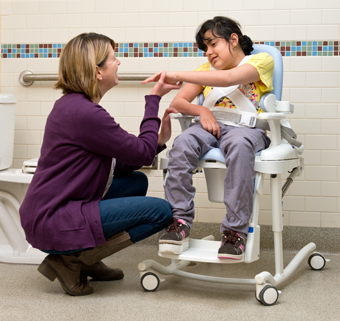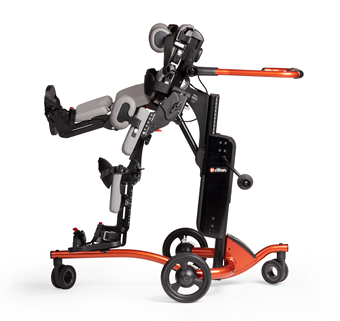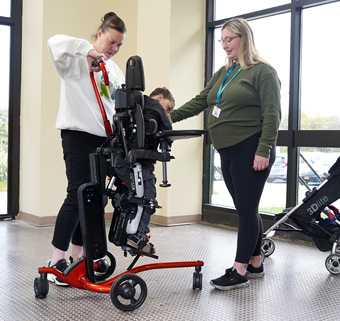State of the Evidence: Intervention Effectiveness in Children with Cerebral Palsy
| March 2020 In 2013, Iona Novak and her team put together one of the most comprehensive evidence-based overviews of pediatric interventions. With over 200 systematic reviews performed since then, this update, State of the Evidence Traffic Lights 2019: Systematic Review of Interventions for Preventing and Treating Children with Cerebral Palsy, adds strength and definition to recommended interventions for children with cerebral palsy.
In 2013, Iona Novak and her team put together one of the most comprehensive evidence-based overviews of pediatric interventions. With over 200 systematic reviews performed since then, this update, State of the Evidence Traffic Lights 2019: Systematic Review of Interventions for Preventing and Treating Children with Cerebral Palsy, adds strength and definition to recommended interventions for children with cerebral palsy.
The great part of this review is the incorporation of higher levels of evidence favoring systematic reviews and randomized controlled trials. The review’s results are formalized in the “Evidence Alert Traffic Light System,” which is an excellent tool for effective clinical interpretation of the interventions studied by that research. Here’s how it works.
- Interventions that fall into the green light category: Go! High quality evidence indicates intervention effectiveness.
- Interventions that fall into the red light category: Stop! High quality evidence indicates ineffectiveness or harm of the intervention.
- Interventions that fall into the yellow light: Measure! Lack of/minimal evidence or inconclusive evidence requires monitoring of intervention outcomes.
It looks something like this:
The interventions are grouped under broad treatment focuses/outcomes. Examples of these are motor outcomes, tone management, contracture prevention and management, hip surveillance, early intervention, pain, cognition, self-care/function, mealtime and prevention. Notice also that the size of the intervention circles are proportional to the number of RCTs assessed for each intervention.
Nothing beats reading the whole article (available in full-text) for the best understanding of the evidence and good visual illustrations, but here is an example of what’s included in the selected motor outcome focus.
Motor Outcomes:
Green Light Interventions:
- Constraint-induced movement therapy
- Goal-directed training
- Partial body weight support treadmill training
- Occupational therapy post botulin toxin
- Mobility training
- Bimanual training
- Strength training
Red Light Interventions:
- Neurodevelopmental therapy in the original passive format
- Sensory integration
- Craniosacral therapy
Yellow Light Interventions:
- Physical activity
- Taping
- Animal assisted therapy
- Acupuncture
It’s notable that all the green light interventions under this category involve task-specific and goal-directed practice, high intensity practice and active participation of the child. This type of intervention is the basis for experience-dependent neuroplasticity and well supported by motor learning principles and the research. The interventions in the red light group, in contrast, take a more passive approach and this may be the underlying cause of their ineffectiveness.
Of course, applying the research findings to clinical practice is the next step. The researchers recommend doing this around child-centered and family goals. Overall, it is tremendously exciting to see evidence-based interventions growing and gaining traction in the pediatric population.
Reference
Novak I, Morgan C, Fahey M, Finch-Edmondson M, Galea C, Hines A, et al. (2020) State of the evidence traffic lights 2019: systematic review of interventions for preventing and treating children with cerebral palsy. Current Neurology and Science Reports. Advanced online publication https://doi.org/10.1007/s11910-020-1022-z.
